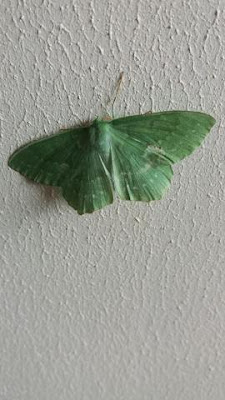One heck of a stink!
Taking a walk through my favourite woodland today gave me a species I haven't seen for some time. It was the distinctive smell that straight away made me know that a Stinkhorn was growing close by. And sure enough, I quickly spotted the above specimen. The smell is what usually gives away their presence, and it is this almost rotting meat type smell that is designed to attract insects to it. Early morning is a good time to smell out a Stinkhorn. This species emerges from an 'egg' (see picture below) that develops beneath the leaf litter. These eggs can be seen in the summer months, however they can be found at any time of the year. Eventually the cap will change to an olive-green colour and become covered with a ' gleba ', which is a smelly spore-laden coating. This is what attracts the insects to it, which in turn collect the spores on their bodies and distribute them elsewhere. Even though the cap hasn't developed the colour yet, it is already attract
